Having a hard time coming up with new blog post ideas to feed your content calendar?
You sit down and are all ready to write but then 45 minutes has passed, you’re still staring at the blank new Google Doc you created. You’re stuck.
Having months worth of blog post ideas in your disposal is your wildest dream right now (instead of struggling with what to blog about six days before it needs to go live).
You’re in luck!
We sorted through thousands of Sumo customer’s most popular articles, and found out content ideas (categorized into blog post types) that get noticed based on 175,000,000 visits.
Ready to see what we found?
- 60 Blog Post Ideas to Keep New Content Coming%(tableofcontents)
- 10 Top Trafficked Blog Ideas (After Analyzing 175 Million Visits)
- How to Come Up With Things to Blog About—and Build Your Content Calendar
- Never Run Out of Blog Post Ideas Again
Hey Sumolings, Dean here.
This post was first written and published by Sarah Peterson. And we recently updated it to make it more relevant and useful for you.
Dean, Head of Content
60 Blog Post Ideas to Keep New Content Coming
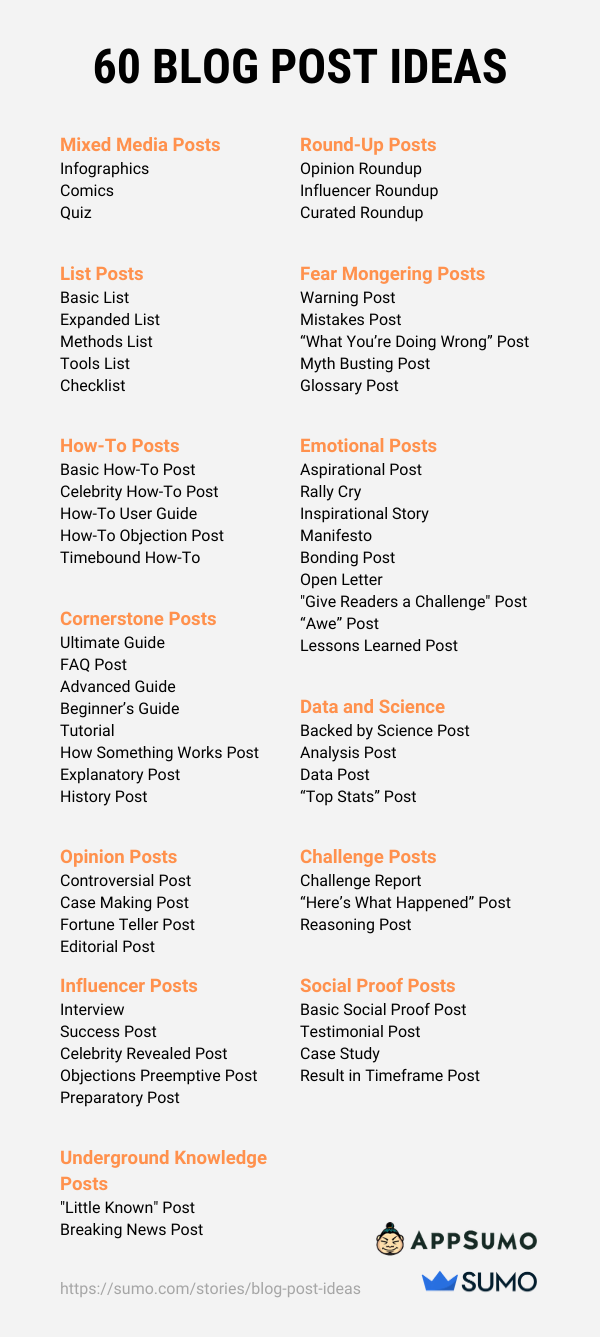
MIXED MEDIA POSTS
-
Infographics. Make no mistake — Infographics are still a highly effective content type to garnish attention, links, and shares.
-
Comics. Explain something using comics to get your point across in a simpler way and entertain in the process.
-
Quiz. Buzzfeed proves it. Quizzing your audience is a viral blog post idea people can’t resist.
ROUNDUP POSTS
-
Opinion Roundup. Ask influencers on their opinion or answers on one question. Round up their answers into an article. Then, ask them to share the article for more traffic. Roundup posts can lead to a shit ton of shares.
-
Influencer Roundup. Round up influencers in your niche who have achieved something cool and write a post about it.
-
Curated Roundup. A roundup of the top articles, podcasts or resources in your niche.
LIST POSTS
-
Basic List. One of the most popular types of content out there, a basic list is a quick read under 1200 words.
-
Expanded List. 1500+ word list posts that expand upon each of the points.
-
Methods List. List all the methods you can think of to get one result.
-
Tools List. List and rank the tools to get something done. Break out to best FREE tools and best PAID tools.
-
Checklist. Create a checklist and form it into a blog post.
FEAR MONGERING POSTS
-
Warning Post. Warn your readers about something they weren’t aware of. Provide information on how the reader can deal with the warning.
-
Mistakes Post. Share the common mistakes that people are making on your topic.
-
“What You’re Doing Wrong” Post. Share one thing that most people are getting wrong about your topic, and show them what to do instead.
-
Myth Busting Post. Debunk a popular myth in your niche (and back up why it’s not true).
-
Glossary Post. Create a glossary for the beginners in your niche to learn all the terms.
Hate running out of ideas on what to blog about? Get the 60 Blog Post Ideas PDF so you can refer to it anywhere anytime.
HOW-TO POSTS
-
Basic How-To Post. Show your readers how to do something in your niche (this includes recipes on food blogs).
-
Celebrity How-To Post. Share how a famous person does something in your niche (ie How to Swim like Michael Phelps).
-
How-To User Guide. Provide a guide on how to use a tool in your niche specific to a group of people (ie How to Use Excel for CEOs)
-
How-To Objection Post. A How To post that pre-empts a common objection (ie How to Start a Business Without Spending a Dime)
-
Timebound How-To. A time-bound How To post (ie How to Lose 10 lbs in 30 Days).
EMOTIONAL POSTS
-
Aspirational Post. Write about somebody who has done something awesome in your niche. (Ie How Sam Smith Cured His Diabetes with a Plant Based Diet).
-
Rally Cry. Get your readers riled up with a rally cry post calling your readers to arms (ie Let’s Stop Letting the Scale Control Us).
-
Inspirational Story. Inspire readers to take action with motivational stories (ie How I Quit My 6-Figure Corporate Job and Travel Full Time) ].
-
Manifesto. Build a community with a manifesto for your blog or readers (ie The Weight Lifter’s Manifesto).
-
Bonding Post. Bond with your readers by writing a personal but highly relatable bonding post with a moral (ie The Unspoken Truth They Never Tell You About Parenting).
-
Open Letter. Write an open letter to a person or group of people (ie An Open Letter to Donald Trump).
-
“Give Readers a Challenge” Post. Help them meet a goal you know they have (because you’re familiar with their psychographics) and show them how to do it (ie The 7-Day Productivity Challenge).
-
“Awe” Post. Leave your readers in awe with a viral video or unusual story (ie The Viral Proposal Every Woman Wants).
-
Lessons Learned Post. Share the lessons you learned doing something unusual or interesting (ie What I Learned From Traveling to Every Country in the World)
CORNERSTONE POSTS
-
Ultimate Guide. A comprehensive, detailed guide covering everything on a specific topic (ie The Ultimate Guide to Going Vegan).
-
FAQ Post. Answer a question that’s frequently asked in your niche (ie Is It Bad For You To Drink Coffee Every Day?).
-
Advanced Guide. An ultimate guide for advanced readers in your topic (ie The Advanced Guide to Google Analytics).
-
Beginner’s Guide. A beginner’s guide for readers in your topic (ie The Beginner’s Guide to Adobe Lightroom).
-
Tutorial. A tutorial of how to achieve something specific (ie A 10-Step Tutorial to Set Up Your Canon DSLR).
-
How Something Works Post. An article explaining how something works like the show How It’s Made (ie How 3D Printers Work).
-
Explanatory Post. Explain something widely misunderstood in a simple way (ie Why Calories in Vs Calories Out Won’t Help You Lose Weight).
-
History Post. Share the history of something in your niche (ie The History of the Cell Phone).
DATA AND SCIENCE
-
Backed by Science Post. Make a claim and back it up by scientific research (ie Science Proves It’s Okay to Let Your Kids Cry).
-
Analysis Post. Analyze a company or process and report on it (ie How Shopify Increased Revenue 90% In 365 Days).
-
Data Post. Analyze data from your own company and report on it (ie We Analyzed 1,000,000 Website Visits and Here’s What We Found).
-
“Top Stats” Post. Round up the top stats in your industry to keep your readers informed (ie 14 Global Warming Statistics You Need to Know).
CHALLENGE POSTS
-
Challenge Report. Share the results of a challenge you conducted related to your blog topic (ie 6 Day Social Detox Challenge).
-
“Here’s What Happened” Post. Do something interesting, and write an article about it (I Stopped Eating Dairy for 90 Days and Here’s What Happened).
-
Reasoning Post. Share why you do something controversial or did something unusual (ie Why I Walked Out on Tony Robbins).
OPINION POSTS
-
Controversial Post. Take a stand for or against something controversial (ie Here’s Why 9/11 Was an Inside Job).
-
Case Making Post. Convince your audience of something that matters, using data where you can (ie Why Your Website Needs an Email List).
-
Fortune Teller Post. Predict something in your niche that will happen in the future (ie You Won't Be Able To Make Money Online In 2019).
-
Editorial Post. Write an article expressing a story or opinion (ie A Day with New York’s Elite).
SOCIAL PROOF POSTS
-
Basic Social Proof Post. Use social proof to tell a story (ie 500,000 Websites Are Succeeding With Sumo).
-
Testimonial Post. Use a testimonial to spin a full article off of it (ie How Tim Grew His Site 4x with Sumo).
-
Case Study. Create a case study off of somebody who had great results with something in your niche (ie [Case Study] Growing a Site from 0 to 10k Visitors in a Month).
-
Result in Timeframe Post. Demonstrate how you got a specific result in a short timeframe (ie How We Build a Product in Only 2 Weeks).
INFLUENCER POSTS
-
Interview. Interview an influencer about something related to your niche (ie Tony Robbins on How He Grew His Traffic to 1 Million Visits/Month).
-
Success Post. Dissect the success of somebody famous and share what you find (ie How Jared Really Lost Weight Eating Subway).
-
Celebrity Revealed Post. Reveal something about somebody famous (ie How Jennifer Lawrence Styles Her Hair).
-
Objections Preemptive Post. Preempt a common objection in your niche (ie You Don’t Have to Give Up Chocolate to Lose Weight).
-
Preparatory Post. Prepare your audience with something they should know before reaching a goal (ie What You Should Know Before You Launch Your First Product).
UNDERGROUND KNOWLEDGE POST
-
“Little Known” Post. Give your readers little known information (ie 13 Little Known Ways to Get Longer Eyelashes).
-
Breaking News Post. Cover some breaking news in your niche to ride the viral wave (ie Chris Pratt and Anna Faris Just Broke Up and the Internet is Crying).
Hate running out of ideas on what to blog about? Get the 60 Blog Post Ideas PDF so you can refer to it anywhere anytime.
10 Top Trafficked Blog Ideas (After Analyzing 175 Million Visits)
The top 200+ blog posts on Sumo’s content-creating customer’s sites revealed that these are the top 10 pieces of content you need to create.
They were responsible for 147,000,000 hits (83% of the top 175 Million hits were on these 10 types of content).
- How-To Post
- List Post
- Explanatory Post
- Warning Post
- Celebrity Revealed Post
- Breaking News Post
- Expanded List Post
- Controversial Post
- FAQ Post
- Ultimate Guide

I’ve even included quick-start guide on how to generate foolproof blog post ideas based on each category.
Ready?
How to Come Up With Things to Blog About—and Build Your Content Calendar
1. HOW-TO POST
The “How To” post outperformed all other article types by a longshot, responsible for nearly 23% of the traffic to the most popular articles.
This is the cornerstone, evergreen content that teaches readers how to do something specific related to your niche. These articles can overlap with the Ultimate Guide (the #10 most popular type of content).
Check out how Herb.co uses how-to guides to teach a specific process:
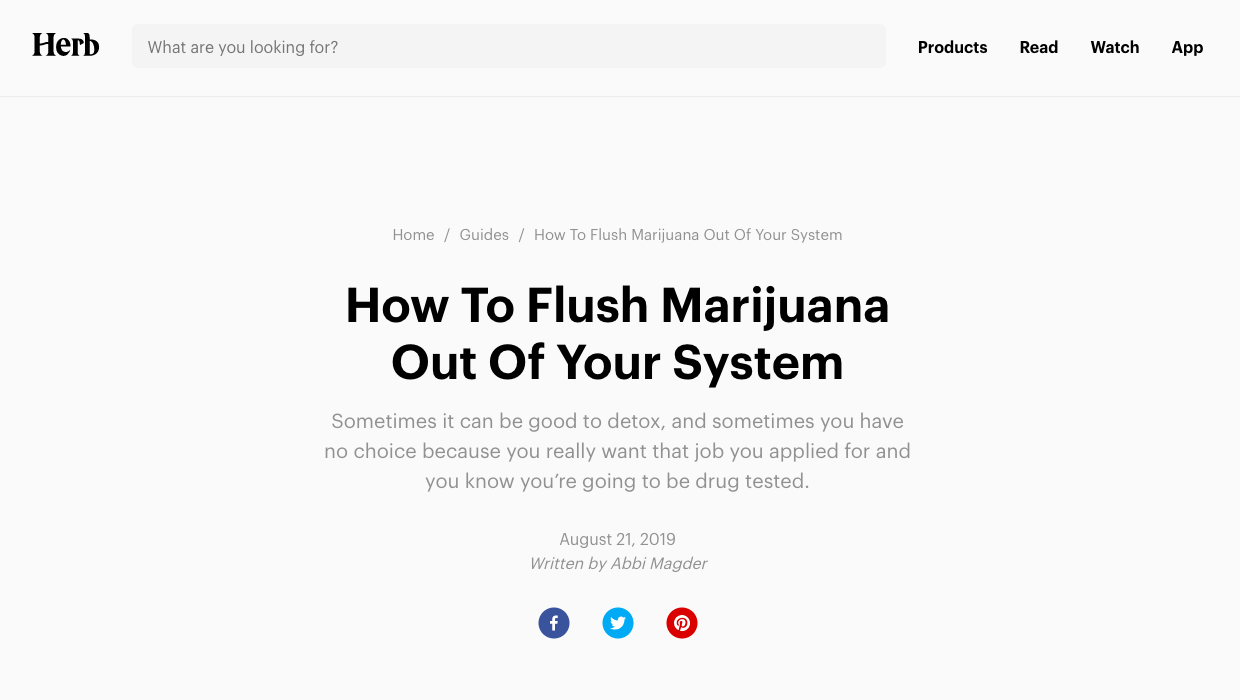
And how Bulletproof uses them for content marketing on their blog, too:
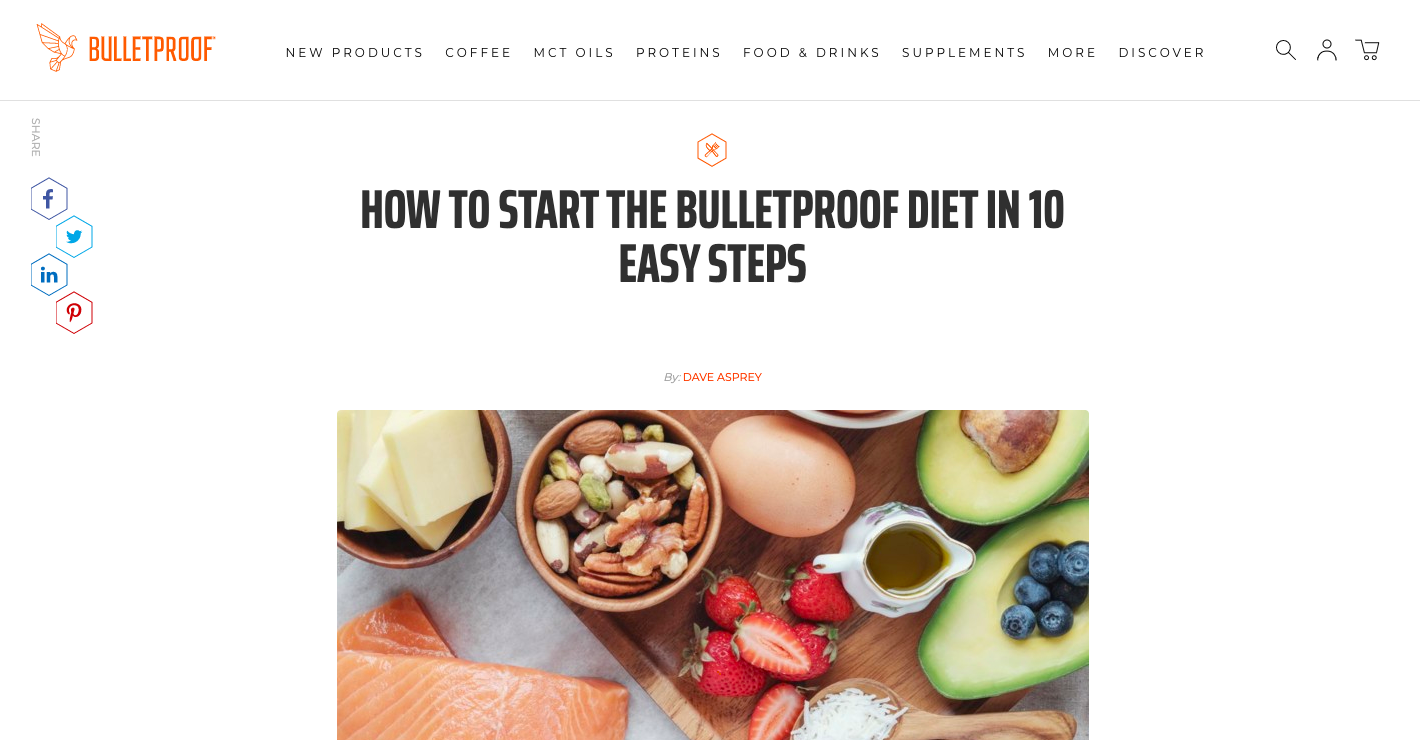
It’s not surprising that “How To” content garnishes so much attention. Who hasn’t Googled how to do something recently?
This is good news for search engine traffic to your “How To” content, but since you’re educating your readers, it’s also extremely shareable.
Not sure what to teach your customers how to do?
Find some inspiration with Quora. Type your topic or keywords into the Quora search bar (let’s say your niche is homeschooling):
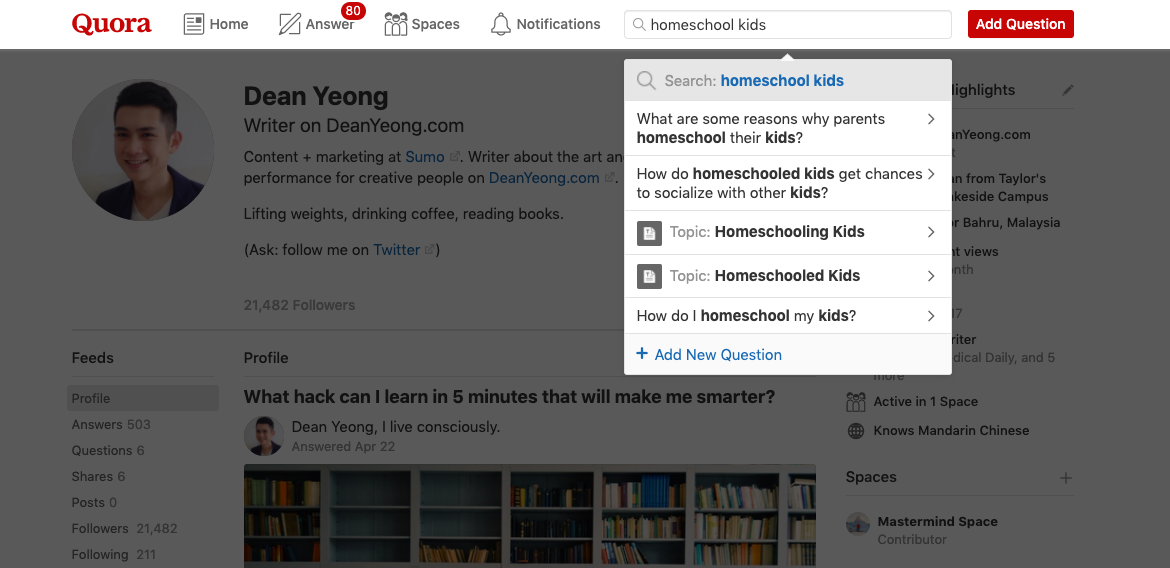
Check out the recently asked questions. In this case, you could write a blog post on:
-
How to Socialize Your Homeschooled Child
-
How to Homeschool Your Kids
-
How to Know If Homeschooling Your Kids Is Right For You
You could also perform a Quora search to find more blog post ideas related to your topic.
2. LIST POST
Not only are list posts in the top two for traffic, they’re also #2 on the top most shared article types.
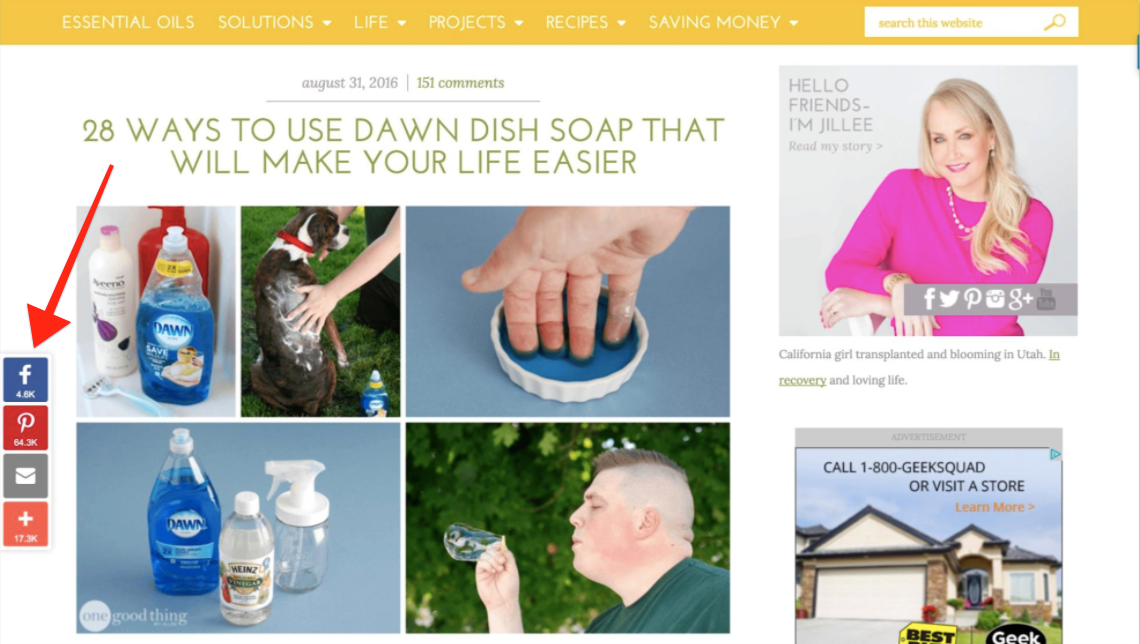
Whether this will work for you depends on your niche and the size of your site. Sumo wouldn’t do very well with simple list posts, but Success.com does:
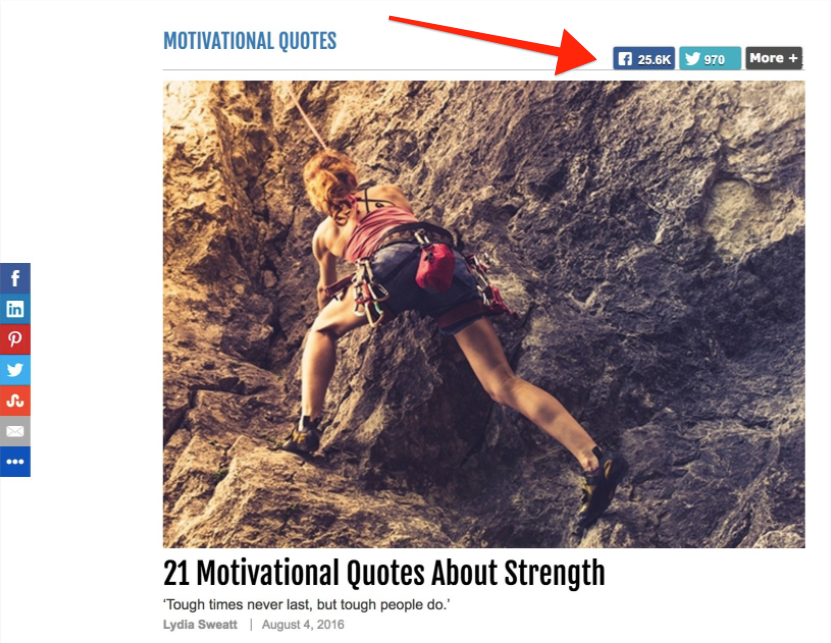
59% of people will share an article without even reading it, and since list posts are easy to scan and instantly gratifying (even when you just see the headline!) these bad boys are shared constantly, contributing to the traffic.
Not sure what type of list post to create?
Find a content analysis tool like BuzzSumo (nope, we’re not brothers) and type in a popular blog in your niche’s URL. Let’s say you were in the travel niche:
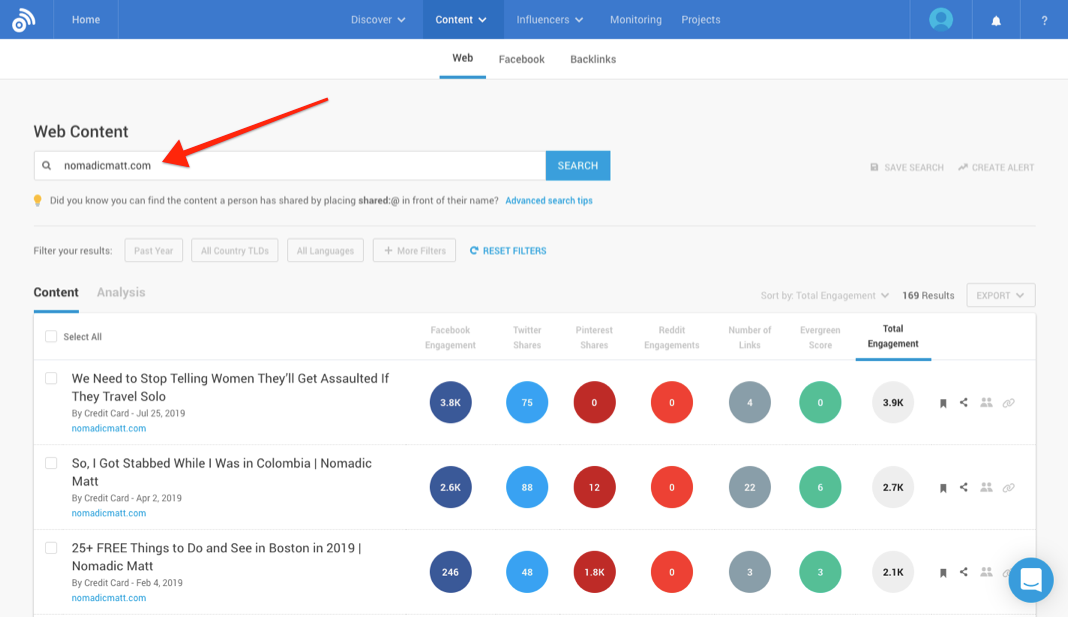
You can then filter the results by published year and sort by total shares. (You need a paid plan to do this.)
These are proven topics in your niche for garnishing attention, shares, and likely traffic.
Don’t copy them, but use them as inspiration for your list post. Here are some prompts:
-
How (ie X Ways to Prepare For Your Solo Trip)
-
Who (ie X Best Travel Credit Card Bonuses in 2017)
-
When (ie X Months for the Best Travel Deals)
-
Where (ie X Little-Known Travel Deal Websites That’ll Save You A Ton of Money)
-
Why (ie X Reasons To Start Travel Hacking in 2017)
Apply those prompts to each topic (in this case, solo travel, travel credit cards, travel deals, travel hacking) for dozens of list post ideas.
3. EXPLANATORY POST
The explanatory post is #3 on the top 10 types of blog posts to create, driving over 20,000,000 hits over the 27 top sites we analyzed.
In this blog post idea, break something complex down and explain it so your readers can understand.
For example, this article on Big Think uses the explanatory post to go into the science of a surprisingly common question:

Another great example is an explanatory article on Dean’s blog:[*]

In these blog posts, you’re educating your audience and setting yourself apart as an authority in your niche.
These explanatory posts are linkable assets (meaning other bloggers and resources in your niche are likely to link to you as value-adds for their readers) which also happen to be evergreen, cornerstone content.
Trying to figure out what to explain but coming up short? I’ve got you.
Pull up a subreddit in your niche. Let’s say you’re in the weight loss niche. I’ll use /r/loseit as an example.
The Quick Way: Type “why does” and “how do” in the search bar (keep the quotes so it filters just for those exact match terms).
Start scrolling through the results to find the top questions people have in the niche:
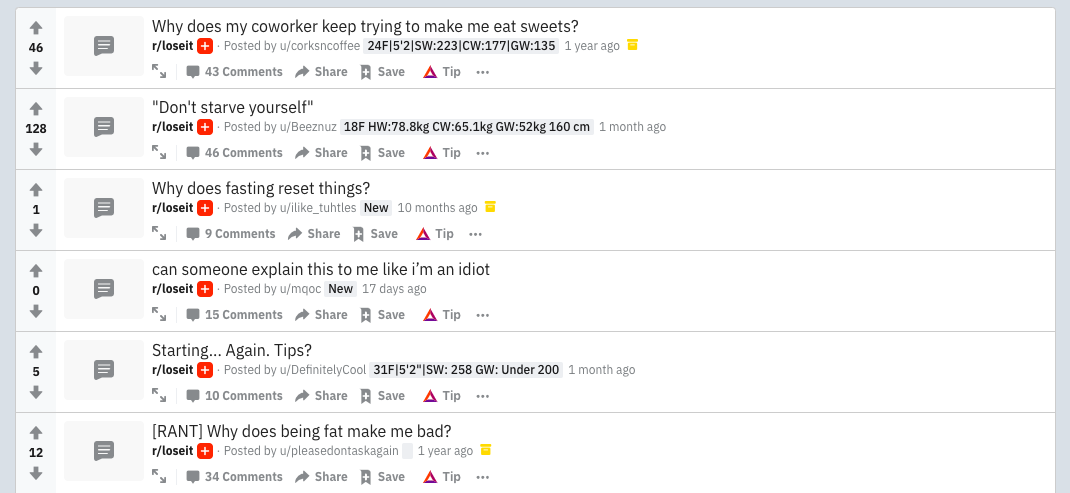
In this case, you might create an explanatory post answering the following questions:
-
Why you should never starve yourself
-
How fasting works in weight loss
-
Being fat doesn’t make you a bad but…
The Better Way: Scroll through the subreddit and open the threads. Read through the questions and struggles the redditors are experiencing.
Pro Tip: For bigger, well-established subreddits, check out the sidebar to find resources like FAQ.

The Silver Platter Technique: Type in your niche/keyword on /r/explainlikeimfive.
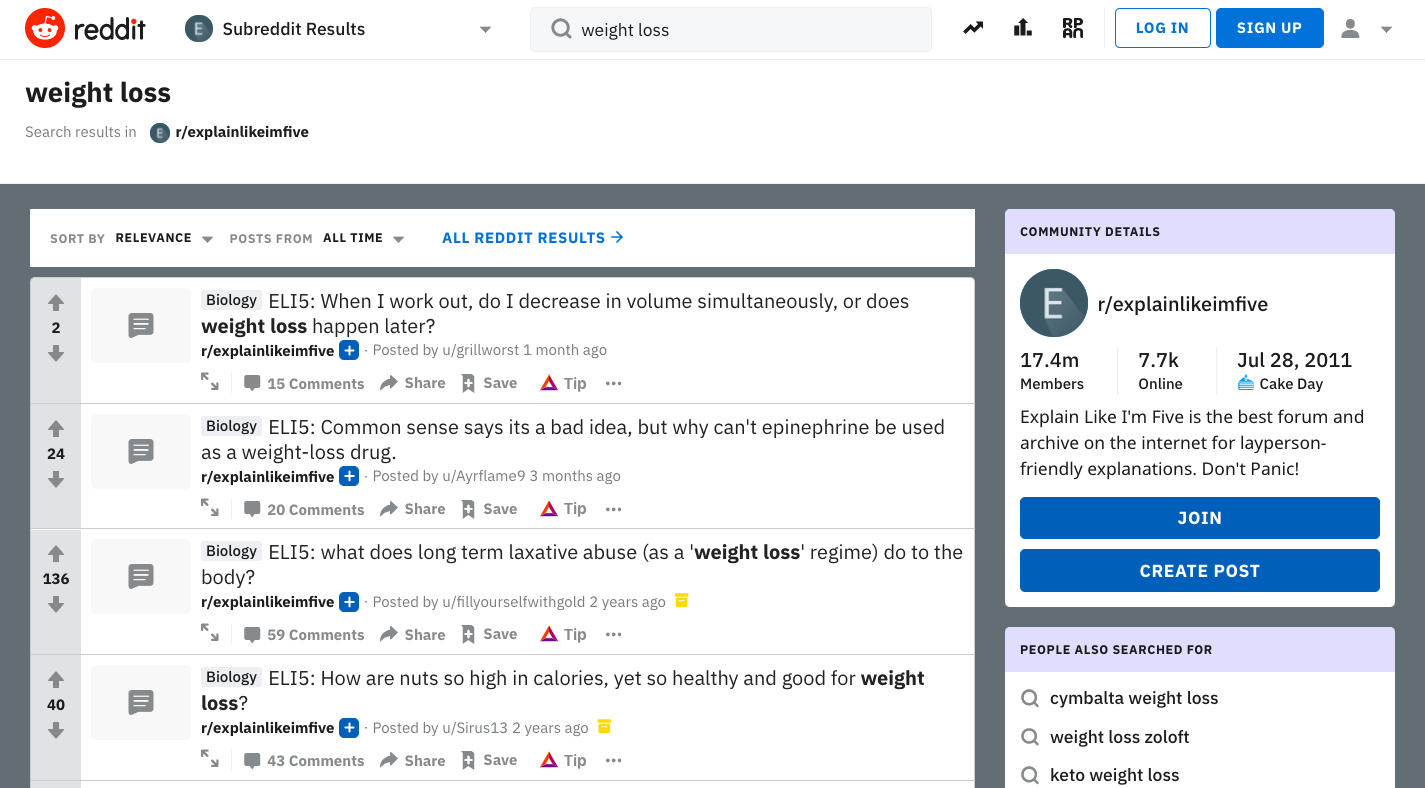
Each of those questions is like a golden, viral nugget for your blog handed to you on a silver platter, giving you a chance to educate about your topic. Write about them.
4. WARNING POST
In the fourth spot, the “Warning Post” drove 17 million hits to our sample sites, and this one makes sense:
Warnings are difficult to ignore.
In this post, you’ll “warn” readers of something that they probably didn’t know about. For example, David Wolfe warns readers that Google is recording them:
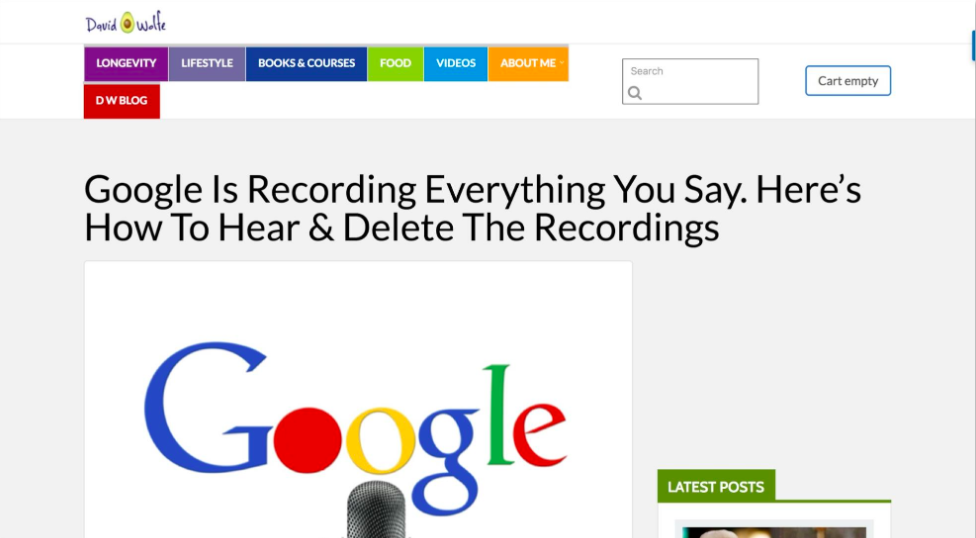
And Mind Body Green warns readers about a side effect of tattoos:
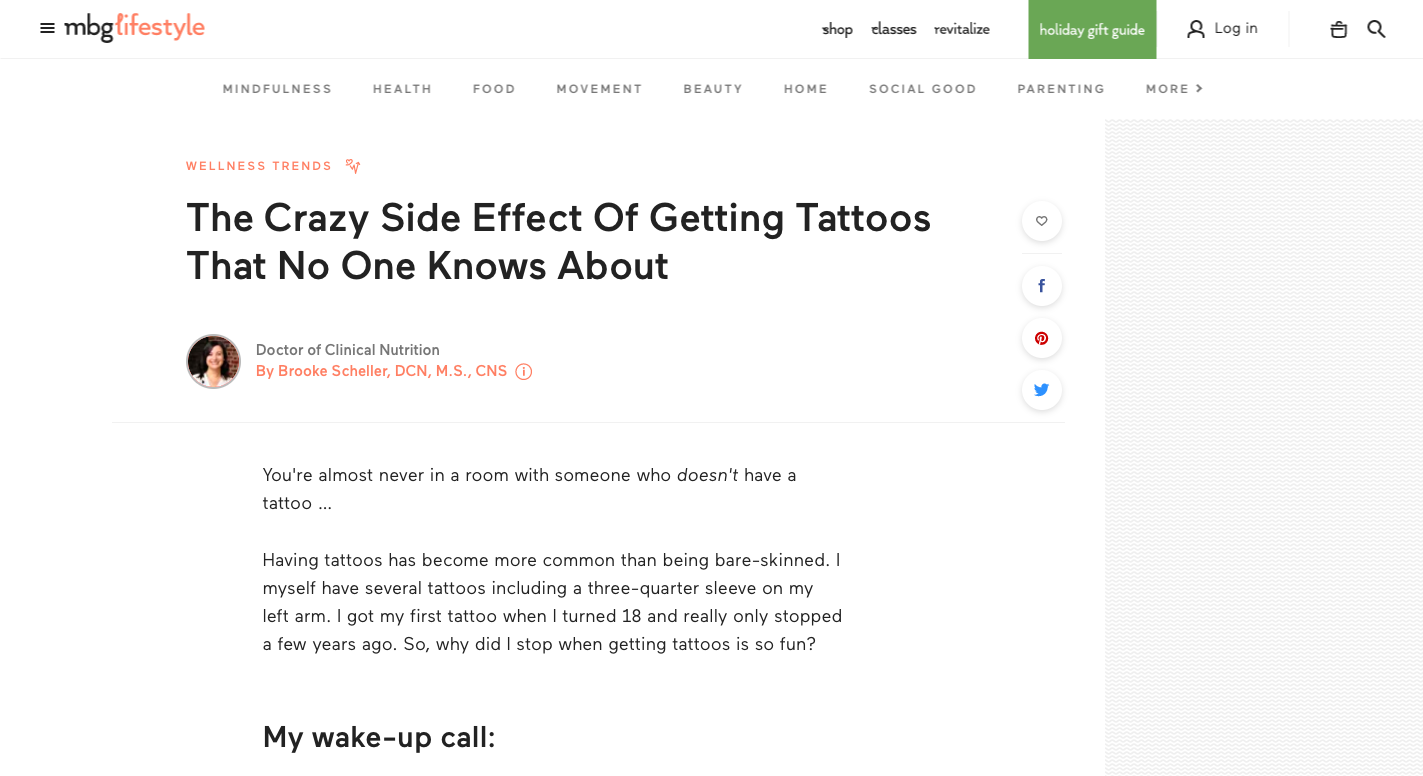
As an expert on your topic, it can be tough to think of what your readers might not know about, so to think of blog post ideas under this article type, use Google Scholar.
Type in “recent studies on [topic]” (for example, nutrition):

And filter for a recent date (Since 2015, 2018, or 2019).
Most people don’t know about the recent science in your field (probably not even you!) so this is an opportunity.
In this example, you might read some of the papers and write:
-
Warning! What Diet Has to Do with Colon Cancer
-
Everything You Need to Know About Personalized Nutrition
-
Gui Microbiota Plays a Critical Role (More Than You Think) in Your Health
Another way to come up with Warning article topics is to think of a common misconception in your field, and warn people about the truth.
5. CELEBRITY REVEALED POST
The Celebrity Revealed Post is an article that “reveals” something about somebody famous in your niche.[*]

This post type attracts readers who want to know some secret information on the celebrity.
To create this type of content, you don’t have to know the celebrity personally or even have insider information. But you should choose a celebrity who is popular in your niche right now.
Chris used this blog post type in his Tony Robbins article, the most shared article in 2017 on Sumo’s blog:
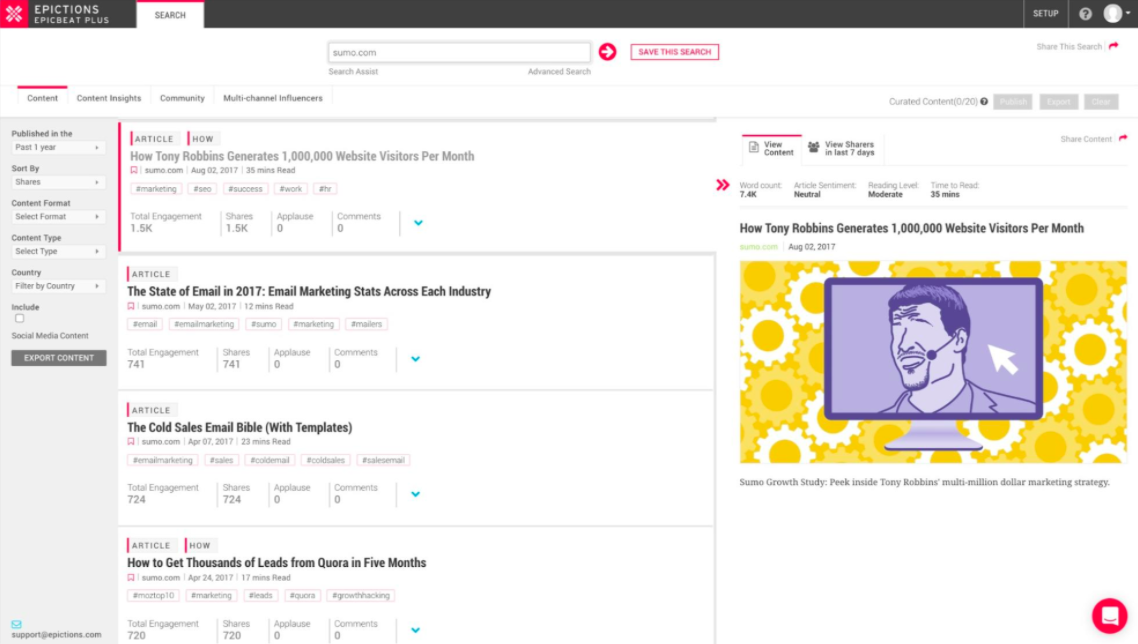
To create Celebrity Revealed posts, think of a top influencer in your niche.
If you’re out of the loop, bring up a top magazine-style publication in your niche (example: Entrepreneur.com for business) and visit their homepage. Let’s say you were in the beauty niche:

I didn’t have to go far to find Jennifer Lawrence (Vogue wouldn’t have put her as the main feature if she wasn’t big right now).
Then, type in “how does [celebrity name]” into Google for autocomplete:

You could write a Celebrity Revealed post about how Jennifer Lawrence styles her hair.
To write the article properly, you could quote some interviews she’s done with others, find hairstyles she’s worn in images, and link to tutorials (or create your own) on how to copy the hairstyle.
Pro Tip: Add a verb behind your search term for more results. “How does [celebrity name] do” came up with different results than just “how does [celebrity name]“:

If you have insider information or you could reveal something negative about a “villain” in your niche, use this as an opportunity as well.
6. BREAKING NEWS POST
This article type won’t be part of your regular rotation unless you’re a news or politics site, but the Breaking News post brought in over 12 million visits for our sample sites, and allow you to ride trending topics on social media, increasing your visibility.
One example is The Drive’s usage of the Breaking News post to share something relevant in their industry:

You don’t need exclusive information to report on breaking news, but you do have to be on top of your niche.
To set up a system so you don’t always have to be checking Google News for new info, set up a Google alert with some keywords in your industry:
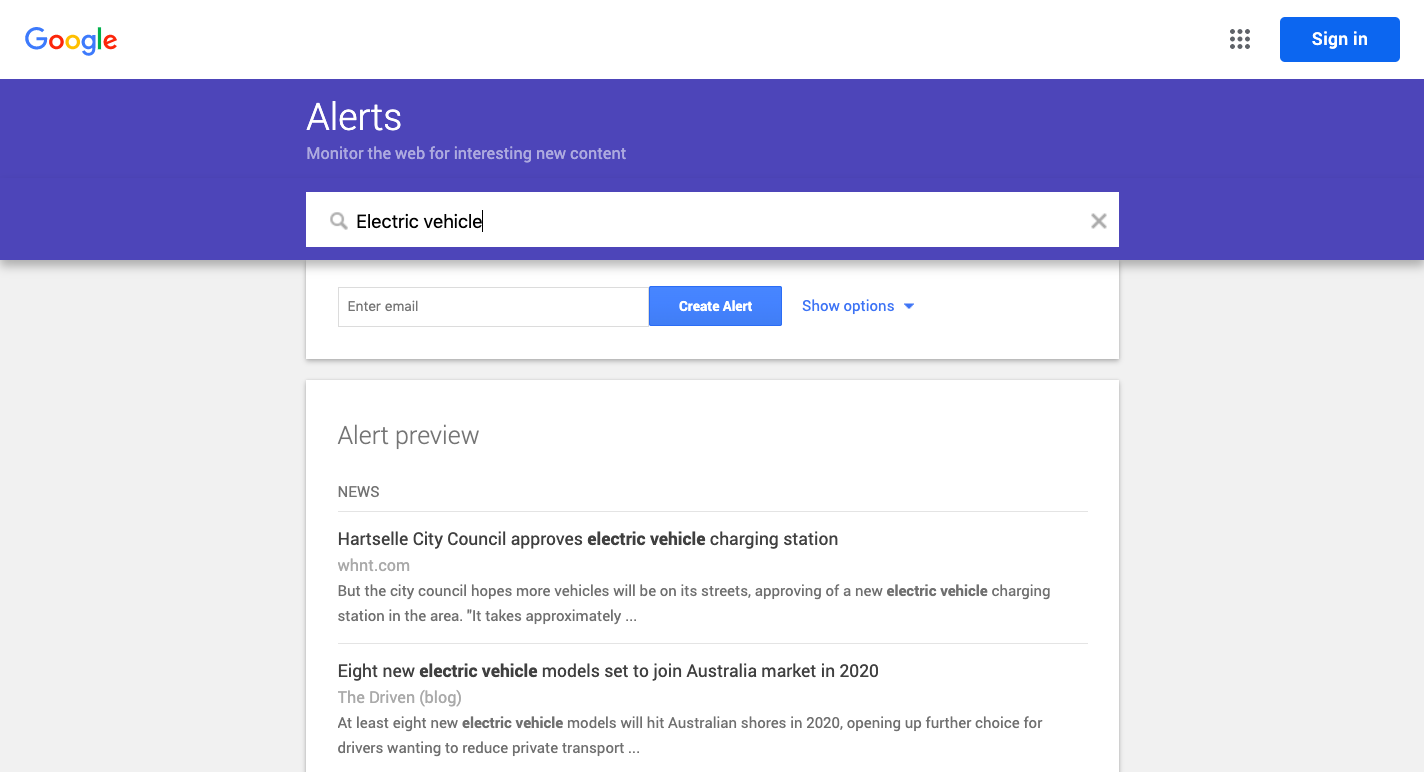
You’ll get an email when those terms are mentioned.
To get the most benefit from a breaking news article, you should write about the news within 24 hours of it emerging.
Check on Twitter and Facebook’s Trend’s sections before you publish and make sure you’re using appropriate terms to take advantage of the trending topic.
7. EXPANDED LIST POST
Alright, so let’s say your niche doesn’t do well with the listicle. Because, you know, you’re not Buzzfeed.
But list posts are #2 on the list of the most popular types of content for traffic, and you don’t want to miss out on the magical unicorn effect they have.
Enter the Expanded List Post™: list posts that actually add value beyond mild entertainment to people’s lives!
In 20 Call-To-Action Examples, we not only list out the examples but provide actionable information on why they work:
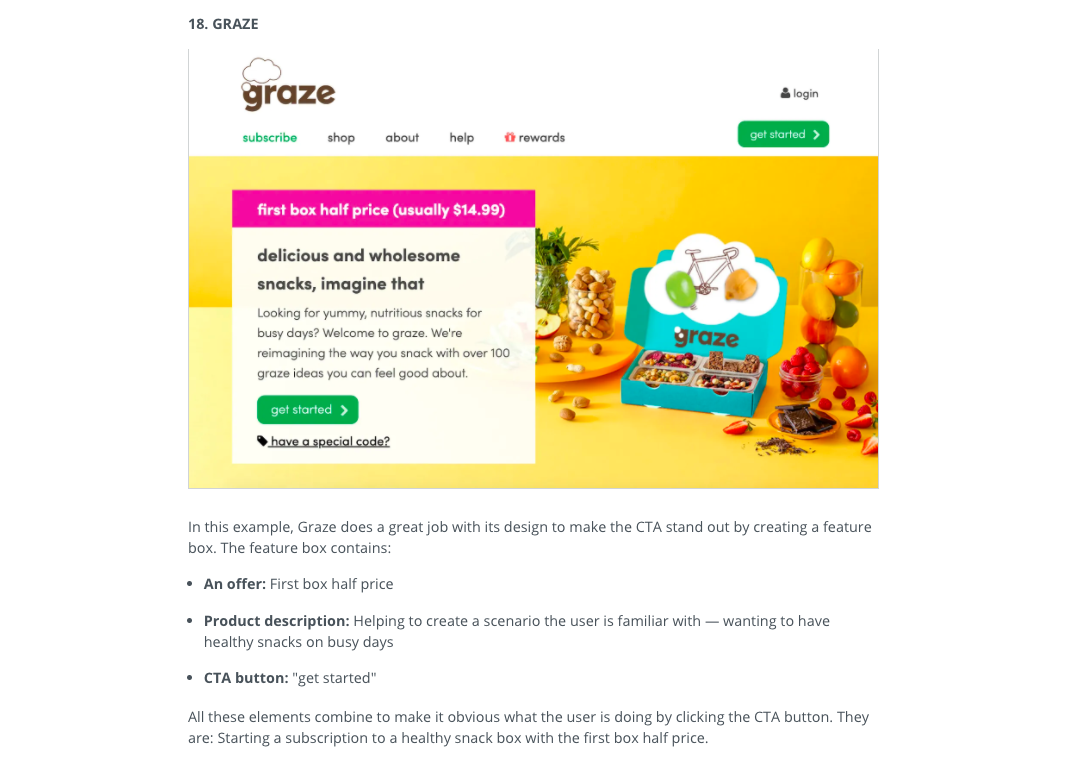
These take the typical list post style article and expand on each of the points, providing more information and methods to take action on the points.
For the Expanded List Post, use the same method of finding topics for your basic list post, but expand on each of the points with more information.
Recall my example topics in the travel niche based on the list post research:
-
How (ie X Ways to Prepare For Your Solo Trip)
-
Who (ie X Best Travel Credit Card Bonuses in 2017)
-
When (ie X Months for the Best Travel Deals)
-
Where (ie X Little-Known Travel Deal Websites That’ll Save You A Ton of Money)
-
Why (ie X Reasons To Start Travel Hacking in 2017)
For the “When”, you might list out 5 of the cheapest months to travel, and under each point, include:
-
An example of one of the best travel deals in that month.
-
Some of the best locations to visit during those months.
-
Data and stats on travel volume during that month.
-
Where to go to find the best deals for that month.
Expanded list posts tend to work in niches where traditional list posts don’t.
8. CONTROVERSIAL POST
Controversy sells.
There’s no surprise there. So it’s also not surprising that this one made it into the top 10 traffic-driving blog post ideas.
But how do you come up with an idea of something controversial to write?
We’ll take it to Reddit again for this one.
Visit a subreddit related to your niche. (Example: Parenting). Many subreddits have a default “Controversial” tab, which displays the threads that are both upvoted and downvoted a lot. Filter for that tab:
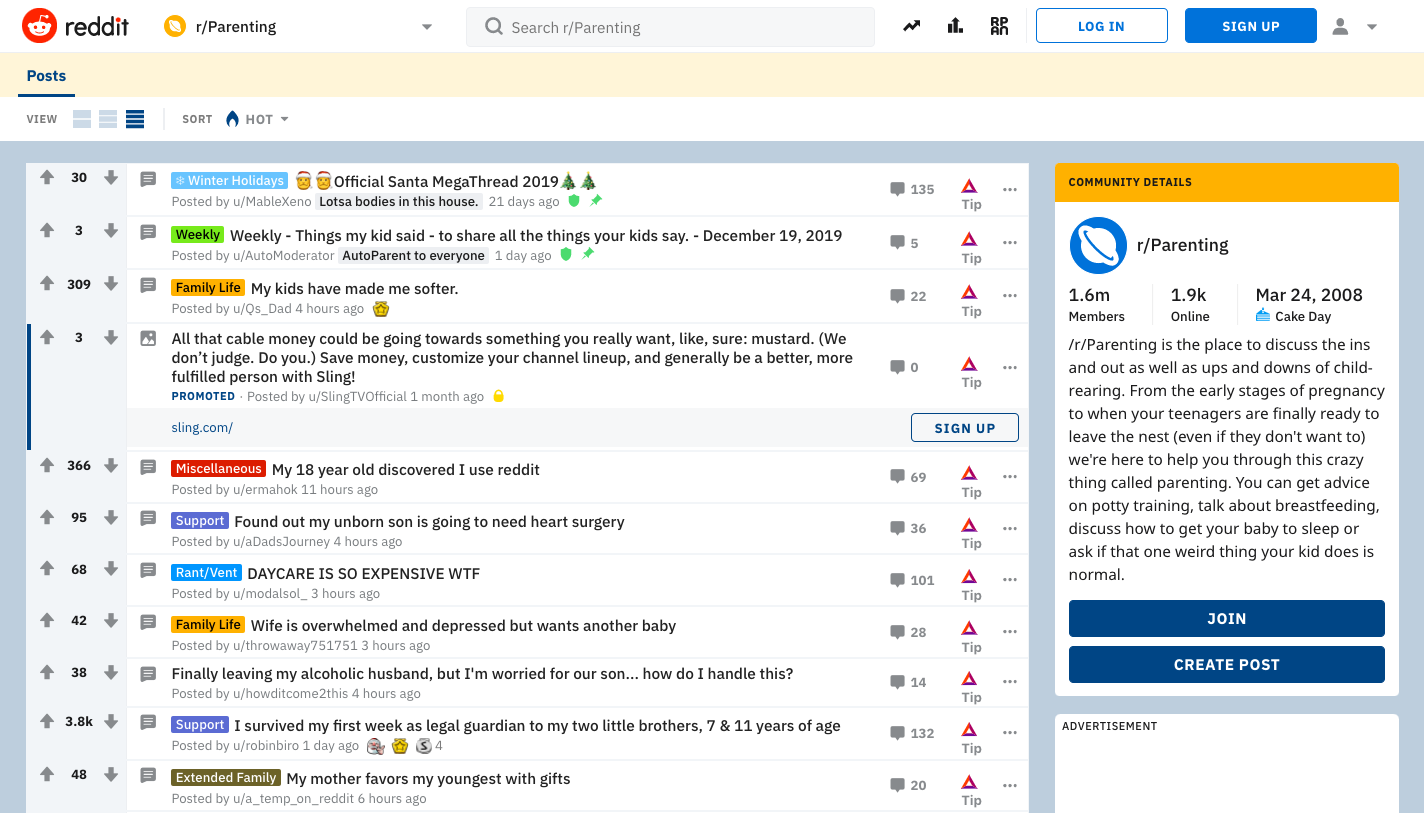
Not every thread will truly be controversial without reading them, but many of the title’s of the threads give themselves away.
In the Parenting topic, some topics include:
-
Daycare is too expensive!
-
Having kids are overwhelming
-
“Spoiling” your baby with holding them too much (believe it or not, this is a controversial topic).
Write a controversial piece arguing for the side you know your target audience stands by (which you’ll know from their psychographics).
Nervous to post something controversial? Don’t be. You’ll repel the people who were never going to follow you anyway, and become magnetic for your target audience.
9. FAQ POST
The most shared content is long-form (3000 words and up).
But shares does not always equal traffic, and this short-form post idea proves that.
Coming in at #9 of the best types of content is the FAQ post. This is when you answer a question that’s frequently asked by your target audience.
These articles are not usually long or revolutionary, but they’re useful. They’re easily referenced in other content (for example, ultimate guides).
A huge benefit to the FAQ post is that the terms can drive tons of search engine traffic, as they have very high search volumes but very low competition.
To draw on another example from Herb.co, they used the FAQ post to get tons of search engine traffic:
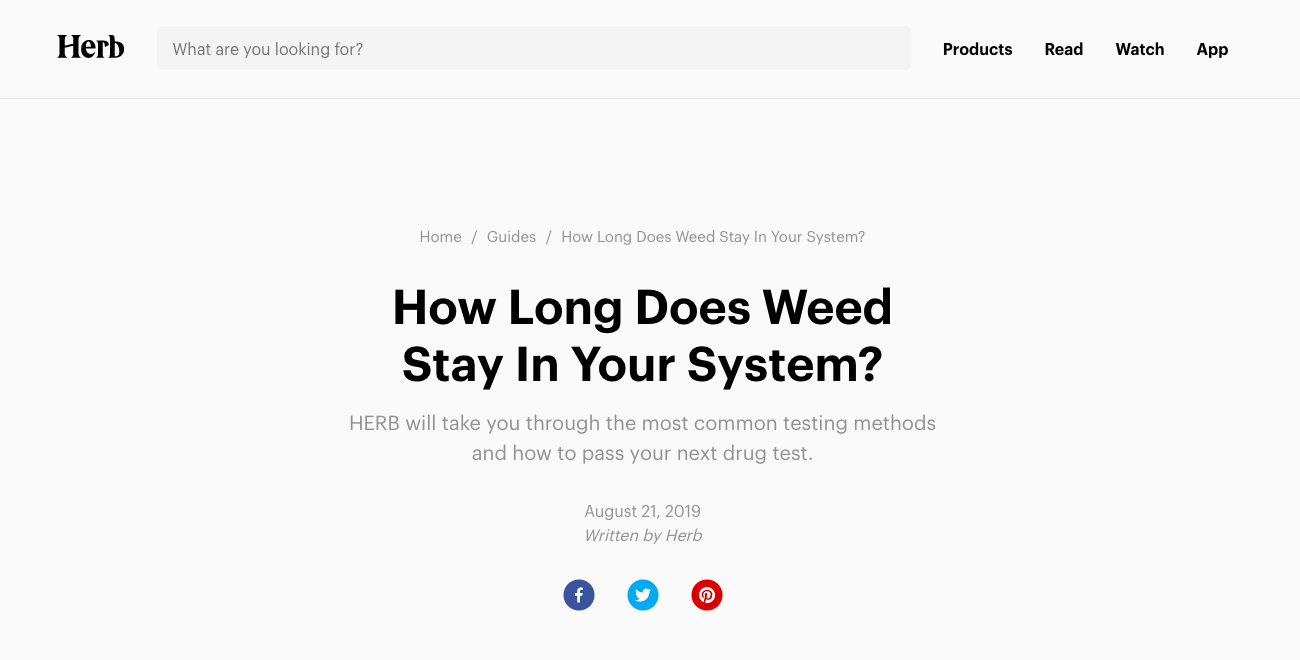
Ranking #1 for a very high volume search term:
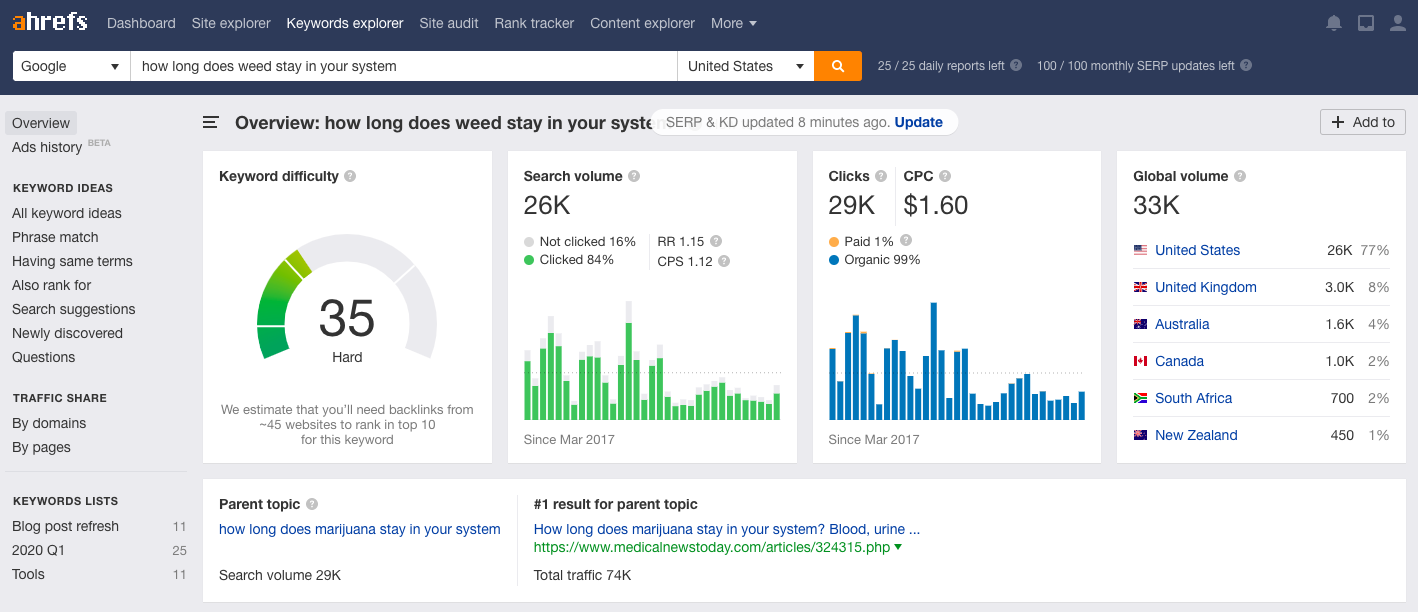
The SEO potential (medium keyword difficulty and relatively high search volume) for these FAQ posts undoubtedly contributes to how much traffic they drive.
Not sure where to start?
You can find plenty of topic ideas by using Answer the Public. Type in your keyword or topic in the search bar. For example, if you had a blog about budgeting:
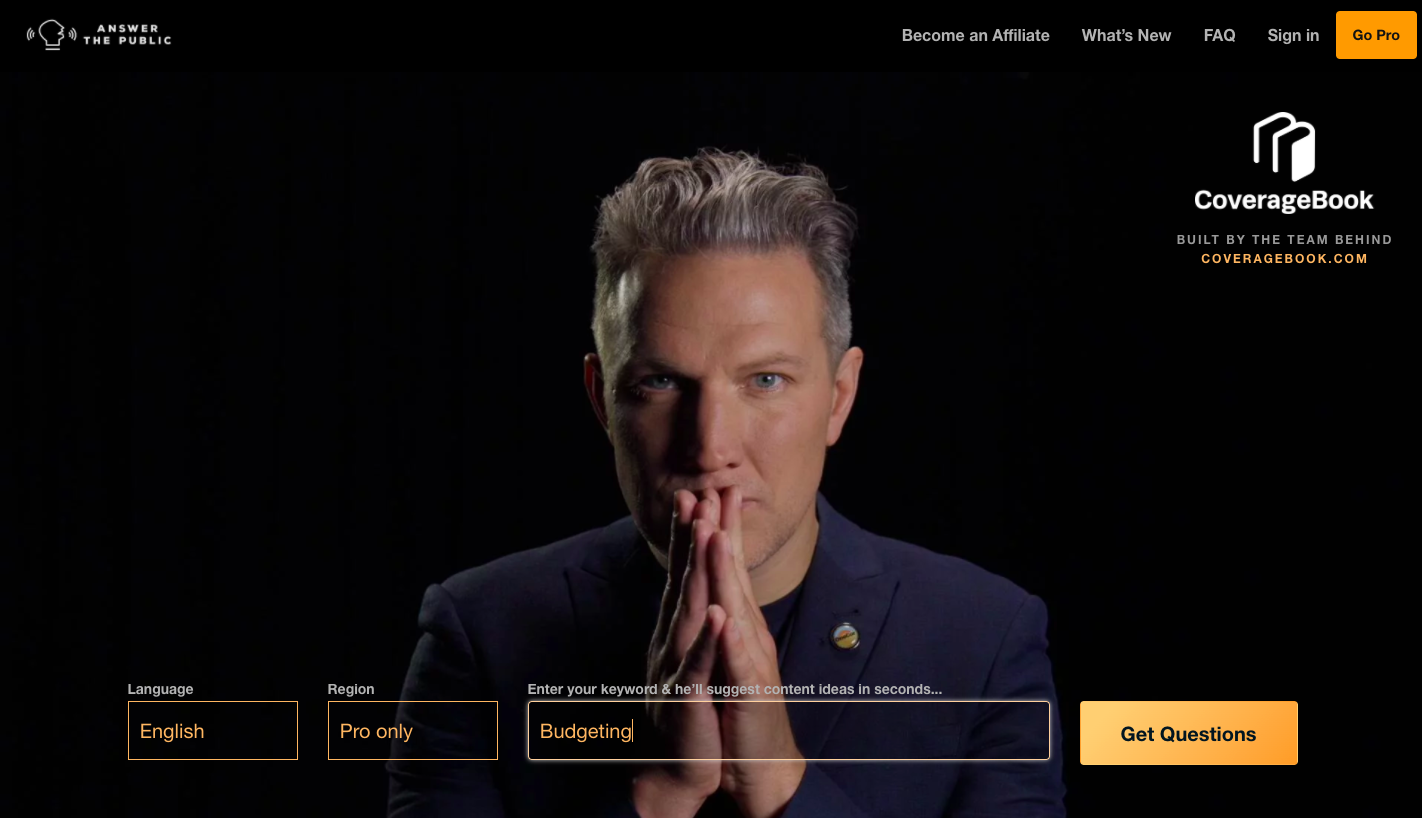
And the tool drums up autocomplete data based on that keyword:

Displaying dozens of blog post ideas for FAQ posts.
In this case, you could write about:
-
Why you should create a budget
-
How to create a budget when you’re self employed or have income fluctuations
-
How to create a budget when you’re paid weekly.
That’s enough blog post ideas to last you for years if you publish weekly.
Pro Tip: Also enter the plural and verb-tenses of the term for other FAQs. For example, when I searched “budgeting” instead of “budget”, I got different results:

10. ULTIMATE GUIDE
The ultimate guide is the ultimate article idea.
It’s a cornerstone, evergreen type of content that covers everything you need to know about a specific topic.
Our guide guide on Instagram marketing is one of the most highly trafficked articles of 2016, but also drove almost 10,000 email signups and was #2 on the top sales-driving pieces of content published last year.
This is where you go in depth into a topic, covering pretty much everything the reader needs to know.
Ultimate guides can be step-by-step processes or comprehensive, informational guides. Because they go deep on one thing, choose a broader topic for your ultimate guide.
Done right, they are linkable assets and attract a lot of attention. So if you truly create the ultimate guide on your topic you can expect to rank decently for the term.
Start by using your favorite keyword research tool (we use Ahrefs) to plug in a search term related to your topic. Let’s say you’re in the baby sleep niche:
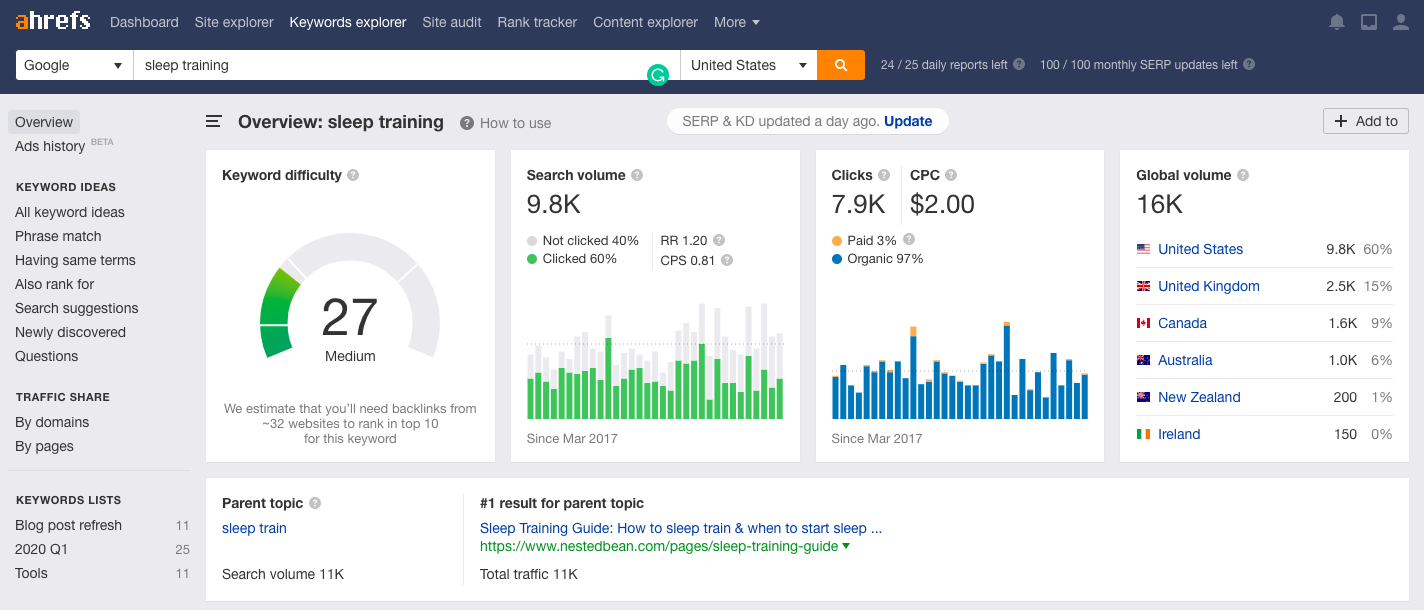
If your keyword difficulty is still in the green (ie it’s “easy”), write an ultimate guide on that search term — ie “The Ultimate Guide to Baby Sleep Training”.
But if it’s more competitive, check under the “Keyword ideas by search volume” section:

These are ripe opportunities for ultimate guides. In our example, you could write:
-
The Ultimate Guide to Sleep Training Methods
-
When to Start Sleep Training: The Ultimate Guide
-
The Ultimate Guide to Sleep Training a 3 Month Old Baby
You can also try a different headline formula (you can choose from these 51) because “ultimate guide” is overused.
To create your guide, though, it’s not as simple as just writing a 1500 word blog post on the topic.
No, you have to create the ultimate guide on the topic.
So open the top search results:
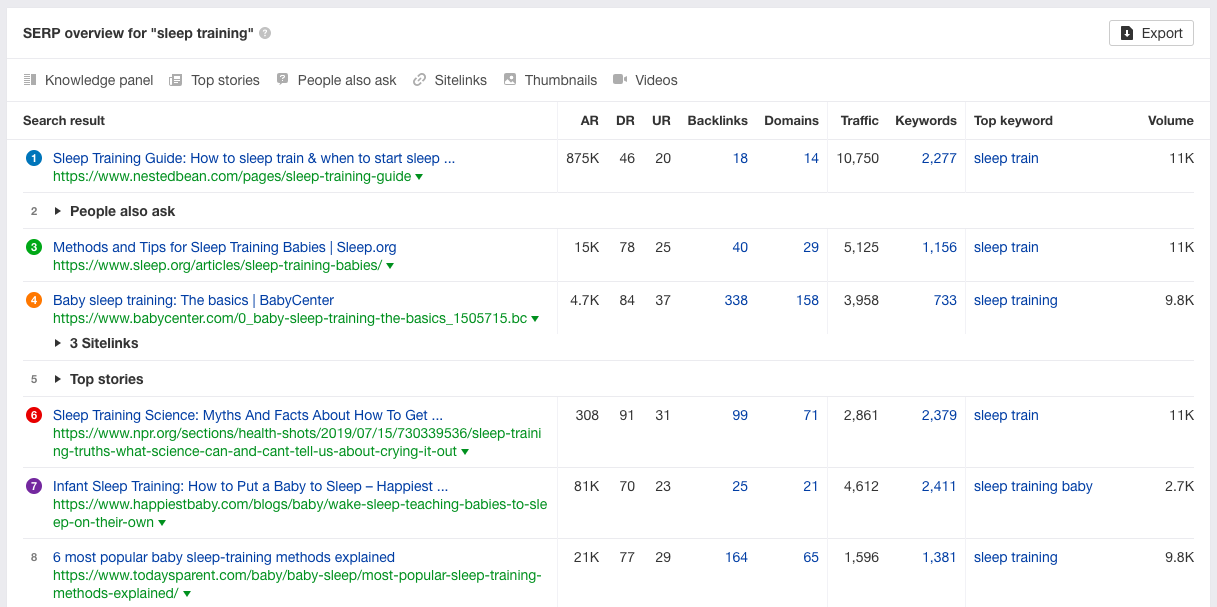
Read through them, and create something better than all of them.
In addition to all of the details covered in the top existing guides, you would make sure you include frequently asked questions by doing some research on Reddit, Quora, and Answer The Public.
Writing an ultimate guide won’t be easy, if you want a more detailed guide on how to do that, check out this ultimate guide on writing an ultimate guide.
Pro Tip: Use this newly created linkable asset to link to your other articles for higher search engine visibility.
Never Run Out of Blog Post Ideas Again
We just covered a lot of ground.
I gave you 60 blog post ideas that actually work, revealed the top 10 ideas that drove the most hits on popular websites, and showed you exactly how to generate hundreds of article ideas step-by-step using a simple, proven framework.
Now you never have to read another article on getting blog post ideas or stare at a blank screen ever again.
Add A Comment
VIEW THE COMMENTS